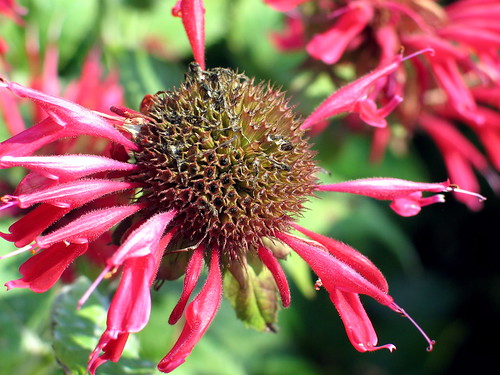Drought Tolerant Gardening Tips
Published by Nanni on Saturday, July 21, 2012
Photo credit by kuyman
Developing drought tolerant lawns and gardens is becoming more important for a number of reasons. Worldwide, climate changes are making it harder to get adequate water for more traditional, wet climate crops. Water is also becoming a scarcer commodity as the population increases the demand of a finite resource. Even if one does not live in an arid climate area, creating lawn landscapes and food gardens made up of less water-demanding plants will save money and potable water.
It is generally easier to convert a lawn to drought tolerant conditions. Without the need to utilize the space for food plants, you can pick through dozens of colorful and intriguing plants to create beautiful landscape designs. With just a few of the low water requiring plants, you can beautify your lawn. Lavender, rosemary, bush sage or bellflower can be used for purple and blue accents. Drought tolerant reds and pinks can be obtained by the use of belladonna, hawthorn, rockrose, cape mallow, or manzanita. Mexican palo verde and flannel bush can provide vivid yellows with Western Redbud and myrtle Compacta for whites. African iris, pineapple guava, and New Zealand flax provide a multitude of colors in both flowers and leaves.
The first consideration is to condition the area for maximum water retention. In an area where you want shrubs to break up airflow or trees to produce shade, you will want to use mulch as a ground cover around the stalks and trunks. This provides nutrients for your drought tolerant plants, and gives a layer of organic cover that will retain and hold water in the soil under the mulch. It also eliminates the need for water thirsty grasses. Compost and manure can also help feed nutrients to your plants, but will require keeping an eye on the soil pH so it does not become too acidic.
Similar types of flowering plants, which have similar water requirements, can be bunched together in specific areas. Defining these areas with gravel will further cut down on areas that require water. Avoid the traditional spray sprinkler systems and install drip irrigation systems. Water your lawn through these systems at night so there is more time for the moisture to seep into the ground. This prevents evaporation of the majority of the water needed to make drought tolerant plants flourish.
For the more practical gardener, converting your food garden to low water plants will provide a greater chance of realizing a harvest even in dry conditions. The bean crops of traditional American gardens can be replaced by the Tepary Bean. Yellow corn can be replaced by Hopi Pink Corn that uses far less water than its Northern cousins. Carobe, crabapple, and persimmon trees provide tasty fruits without overburdening the available water supply. Sunflowers are another low water plant that yields a very healthy food source.
You will have to expend more water on new plantings as you begin the conversion to drought tolerant plants. It is necessary to help give the new plants a firm start in their new areas. Once they have become established as adult plants, the water requirements will drop immensely. Without reverting to even a single cactus you can fill your landscape, both lawn and garden, with a beautiful and nutritious bounty of low water plants that will continue to thrive even in arid and drought conditions.
 | Posted in »
| Posted in »

0 comments: Responses to “ Drought Tolerant Gardening Tips ”